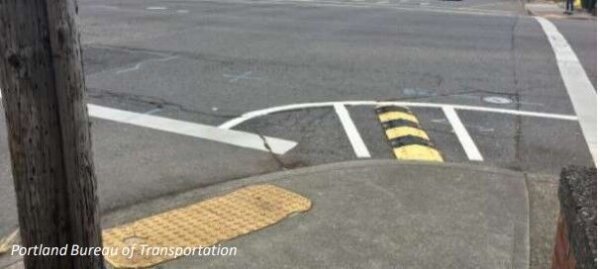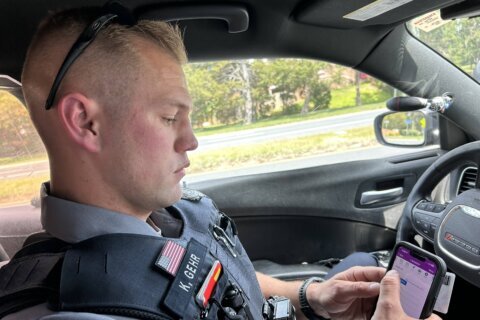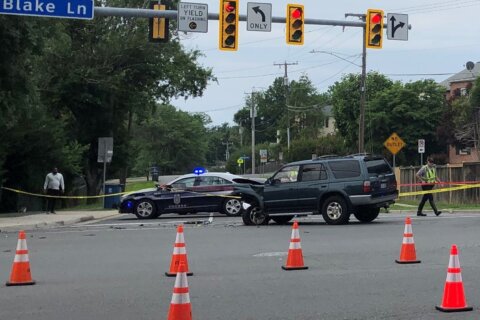Some Fairfax County Supervisors said they would support a pilot program that introduces turn-calming measures on certain roads, aimed at keeping pedestrians safe while drivers make turns.
During a Board of Supervisors Transportation Committee meeting last week, officials were briefed on how other jurisdictions across the U.S. have used similar measures to protect pedestrians. The presentation came after the county requested an analysis of how a similar program could be adopted.
Lauren Delmare, chief of the county’s active transportation section, said turn-calming measures aim to reduce turning speeds and high-speed turns, and make pedestrians more visible to drivers in the crosswalk by “reorienting the vehicle to be looking straight ahead at the crosswalk rather than at an angle.”
Places such as Toronto, New York, Portland and San Francisco have implemented turn-calming programs, which Delmare said look different based on location.
Left-turn calming measures, Delmare said, are usually done with a hardened centerline “or a small median bump along the centerline of the roadway at the intersection.” They can come with or without the tall, flexible posts and with or without extending into the intersection.
As for right-turn calming measures, Delmare said those include things such as a turn wedge, truck apron, pillow or pavement striping to protect pedestrians.

The hardened centerlines without flexible posts were effective based on the county’s research into how they’re used in Portland, Delmare said. The left-turn calming measure resulted in a 16% decrease in the median turning speed, and a 90-100% decrease in drivers crossing the centerline.
Hardened medians with the flexible posts were a little bit more effective at slowing turning speeds than those without the posts, Delmare said, but are more expensive to put in place and maintain.
The equipment used to get drivers to slow down while turning isn’t likely to have issues as a result of snow, but the Virginia Department of Transportation did raise several concerns about using it.
For one, VDOT was concerned with maintenance costs, durability of the speed bumps and the long-term effectiveness of them if they were to be hit, Delmare said. VDOT also asked what the selection criteria would be for roads to get the equipment, and how it would work in suburban neighborhoods.
“I can’t think of many things that are relatively low cost that could return that type of benefit when we’re dealing with the pedestrian issues that we’re dealing with,” Chairman Jeff McKay said.
Supervisor James Walkinshaw recalled an incident last year, during which 70-year-old Ly Tran was fatally struck by an SUV driver as she tried to cross the street in the intersection at Kings Park Drive and Braddock Road.
Walkinshaw said Tran was hit by a car that was making a right turn.
“[This is a] textbook, I think, example of the need for this,” he said.
Supervisor Dan Storck, meanwhile, said “compliance is always going to be our challenge, and enforcement will always be very difficult.”
But, he said he anticipates a turn-calming program would help address those concerns.
Exact next steps weren’t addressed at last week’s meeting, but McKay said, “This seems to be a tool that we should be working with VDOT to try to get in more places in the county.”








